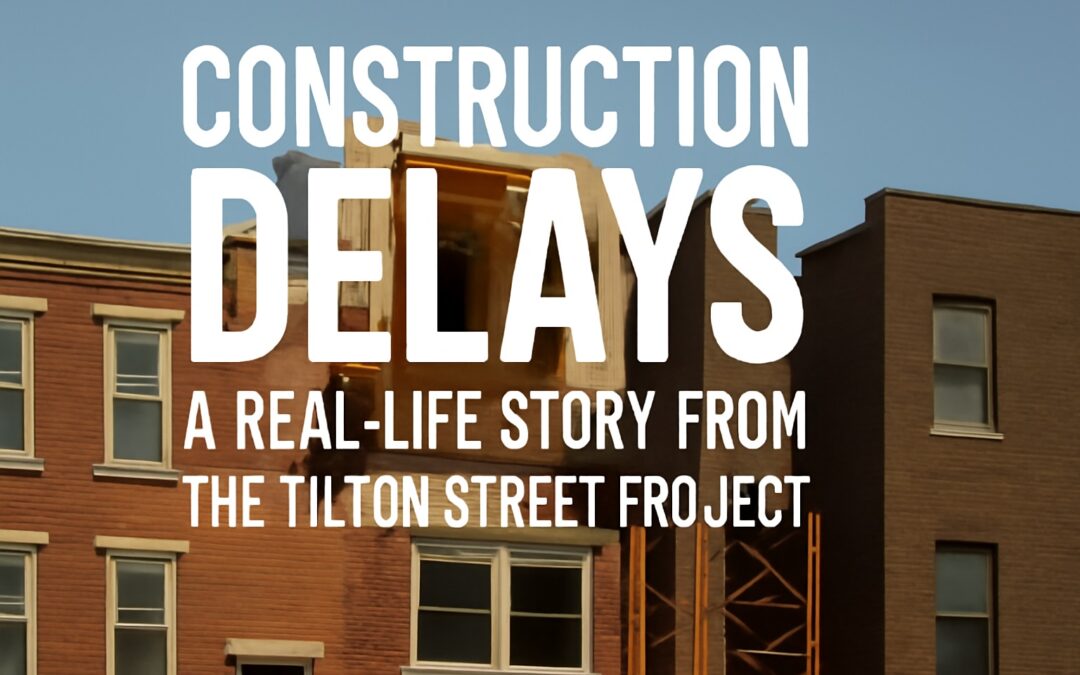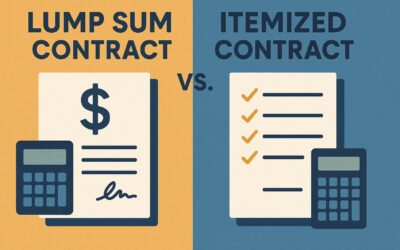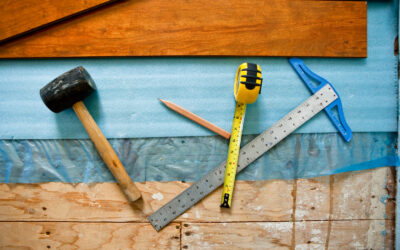You might only realize how vital proper floor cleaning is once a mistake happens! The flooring in your home is one of the most noticeable features, and leaving a stain or damaging it can seriously affect the overall look of your home. Many times, floor cleaning mistakes are to blame for these issues. In this article, we will guide you on properly cleaning your floors based on their type!
First, we’ll discuss some general information you should consider when cleaning your floors. Then, we’ll advise you on which cleaner to use for each type of floor.
Let’s get started!
Related Article : How to do a construction clean up?
General Floor Cleaning Steps
- Always vacuum or sweep before mopping.
- Don’t use the beater bar on your vacuum when cleaning hard floor surfaces. The roller brush in your vacuum is designed for carpet and can scratch or damage hard floor surfaces. Instead, use a soft bristle brush for hard floors.
Figure 1: left: Beater Bar, right: Bristle Brush
- Mop in the direction of the grain to avoid streaks.
- Use the proper mop. Avoid steam mops as they can leave a residue. Also, don’t use string mops, which leave too much moisture behind. Instead, use a flathead microfiber mop.
Figure 2: left: String Mop, right: Flathead Microfiber Mop
- Clean stains or spills immediately.
- Avoid using abrasive cleaning supplies like scrubbing pads or stiff bristle brushes to prevent scratches.
- Don’t push heavy objects across the floor.
- Put felt pads or furniture slides under furniture legs to stop scratches.
- Put mats at outside doors to keep dirt and oil outside.
- Remember to mop the floor with the minimum amount of moisture. Some industrial cleaners require rinsing, so read the instructions and rinse the floor thoroughly with a clean, damp mop if needed. ALWAYS dry the floor thoroughly with a clean mop.
- It’s best to use a spray bottle attached to the mop instead of a bucket of water.
- Avoid using bleach or ammonia-based cleaners. It’s essential to use cleaning products with a neutral pH specifically designed for your type of flooring.
- Use the cleaning product according to the manufacturer’s instructions.
Cleaning Instructions for Each of the Following Floor Types
1. Hardwood
Figure 3: Hardwood Floor
You may have either finished or unfinished hardwood flooring. Place a drop of water on the floor to determine which you have. If the water beads, you have a finished floor; if it soaks in, it’s unfinished. Unfinished floors can’t tolerate moisture, so cleaning them involves sweeping without using any liquids.
To clean finished hardwood floors, use a slightly wet microfiber mop. It’s important to avoid using excessive water as it can cause the wood to swell and be ruined if left wet for prolonged periods. You can also use a cleaning solution for deeper cleaning.
Figure 4: Hardwood Floor Cleaner: Pine-Sol Multi-Surface Cleaner.
2. Laminate
Figure 5: Laminate Floor
Laminate flooring is a type of synthetic flooring material made to look like natural materials such as wood or stone. It typically consists of multiple layers, including a core layer, a photographic layer that mimics the appearance of wood or stone, and a protective top layer. Laminate flooring is quite sensitive, so it’s crucial to be cautious about your floor cleaning products. Avoid soapy detergents, oil-based cleaners, and products for wood floors, cabinets, and furniture. These can leave streaks that are difficult to remove. Also, never wax or polish your laminate floors.
When cleaning laminate floors, it’s essential to use a cleaner made specifically for laminate floors and a slightly wet microfiber mop. Please don’t use a steam cleaner or a too-wet mop, as they can harm laminate. If there’s a spill, quickly blot it with a damp cloth to prevent the laminate from getting damaged.
Figure 6: Laminate Floor Cleaner: Bona Hard-Surface Floor Cleaner.
Stubborn marks, such as those caused by shoe polish, can be tackled with a nail polish remover containing acetone or other mild solvents. WD-40 can also be effective for this purpose.
3. Luxury Vinyl
Figure 7: Luxury vinyl Floor
Luxury vinyl flooring, also known as LVP (luxury vinyl plank) or LVT (luxury vinyl tile), is a type of resilient flooring made of multiple layers, including a base layer, a printed layer that mimics the appearance of wood or stone, and a protective wear layer. Like laminate flooring, LVP resembles wood, while LVT resembles stone or ceramic tiles. Luxury vinyl flooring is becoming increasingly popular because it’s durable and easy to clean. Also, it is more water-resistant than laminate or hardwood. Use a damp mop with a mild cleaner when needed to keep it clean.
For this flooring, avoiding detergents with high pH levels is essential. High-pH detergents include corrosive substances, bleach, and ammonia-based products. Additionally, avoid using cleaners that leave a hazy glaze on the floor, such as wood oil soap or anything designed to provide shine, as these are suitable for ceramic floors. Don’t use soap, wax, or oil-based cleaners because they can make the floor dull and slippery.
Figure 8: Luxury Vinyl Floor Cleaner: Luxury Vinyl Floor Cleaner
4. Linoleum
Figure 9: Linoleum Floor
Linoleum flooring is a resilient material made from natural ingredients such as linseed oil, wood flour, cork dust, and mineral pigments. These materials are mixed and pressed onto a backing material, such as burlap or canvas, to create sheets or tiles of linoleum. Linoleum flooring is like vinyl but can get damaged more easily by water. So, it’s essential to be careful with it. Avoid using hot water, steam mops, or too much water when cleaning. These cleaning methods can harm the floor and the glue that holds it down. Start by sweeping or dry mopping the linoleum floors, then mopping with a quick-drying microfiber mop. For deep floor cleaning, use a product designed for linoleum floors.
Figure 10: Linoleum Floor Cleaner: Aunt Fannie’s Floor Cleaner Vinegar Wash Concentrate
5. Cork
Figure 11: Cork Floor
Cork flooring is made from the bark of cork oak trees and is a popular and eco-friendly choice. The bark is ground up, compressed, and then formed into sheets or tiles. Because cork is natural, it’s best to avoid using harsh abrasives and products containing ammonia, alcohol, vinegar, or oils. Additionally, cork is sensitive to moisture, so be cautious not to use excessive liquid when mopping and avoid steam cleaners altogether when cleaning cork floors.
Figure 12: Cork Floor Cleaner: Bona Hardwood Floor Cleaner Concentrate
6. Marble
Figure 13: Marble Floor
Marble flooring is known for its luxurious appearance, with distinctive veining and a polished surface. It is easy to clean and maintain. To clean marble floors, use a microfiber mop with a marble floor cleaner. Marble is porous and absorbs liquids, so choosing the correct cleaner is essential. Avoid cleaners with vinegar, ammonia, or citrus, as they can cause dull spots. Refrain from using anything rough on marble, like scrubbing brushes or scouring pads. Use a floor cleaner with a neutral pH level for the best results.
Figure 14: Marble Floor Cleaner: Black Diamond Marble and Tile Floor Cleaner
7. Ceramic and Porcelain Tile
Figure 15: Ceramic Floor
To clean tile floors, you can use warm water, mild soap, or a cleaner made for tiles. Another good option is a steam mop because it cleans and sanitizes the tiles simultaneously without leaving streaks. Since steam cleaners only use water, they won’t harm the grout. Avoid using products with acids or ammonia because they can change the color of the grout.
Figure 16: Tile Floor Cleaner: Granite Gold Stone And Tile Floor Cleaner
8. Stone
Figure 17: Stone Floor
For natural stone flooring like granite, travertine, or limestone, mop with a specialized stone floor cleaner and warm water. Never use vinegar or ammonia products, which can degrade the sealant and leave your floors vulnerable to damage and staining. Don’t soak your mop with too much water because moisture can get caught in the natural crevices of the stone and cause mildew.
Figure 18: Stone Floor Cleaner: Granite Gold Stone And Tile Floor Cleaner
9. Bamboo
Figure 19: Bamboo Floor
Bamboo flooring needs care and cleaning, similar to hardwood. To keep it nice:
- Vacuum it to prevent scratches and damage from dirt and debris.
- For mopping, use a microfiber mop and lightly spray a gentle floor cleaner on your floor, then mop along the wood lines.
- Never use vinegar or a steam mop on bamboo floors.
Figure 20: Bamboo Floor Cleaner: Bona Hardwood Floor Cleaner
10. Carpet
Figure 21: Carpet Floor
Carpet is a popular flooring choice for those prioritizing comfort, warmth, and noise reduction in their living spaces. Regular vacuuming is essential to keep your carpet clean to remove dust and debris. Using a carpet cleaner machine can be very effective for deeper floor cleaning, especially if you notice your carpet is visibly dirty.
Figure 22: Carpet Cleaner Machine
These machines thoroughly clean your carpet, but spot cleaning may work for more minor stains. You need to know which cleaning product to use for each type of stain and how to apply it properly to prevent permanent staining. Different stains require different treatments; for example, a product effective against ink stains may not work for removing wine stains. One highly recommended stain remover product is shown in Figure 23.
Figure 23: Biokeen Bac-Out Enzymatic Carpet Stain and Odor Remover.
Table 1: Floor Cleaning Products for Each Floor Type
| Flooring Type | Floor Cleaner Product |
| Hardwood | Pine-Sol Multi-Surface Cleaner
|
| Laminate | Bona Hard-Surface Floor Cleaner |
| Luxury Vinyl | Luxury Vinyl Floor Cleaner |
| Linoleum | Aunt Fannie’s Floor Cleaner Vinegar Wash Concentrate |
| Cork | Bona Hardwood Floor Cleaner Concentrate |
| Marble | Black Diamond Marble and Tile Floor Cleaner |
| Tile | Granite Gold Stone And Tile Floor Cleaner |
| Stone | Granite Gold Stone And Tile Floor Cleaner |
| Bamboo | Bona Hardwood Floor Cleaner |
| Carpet | Biokeen Bac-Out Enzymatic Carpet Stain and Odor Remover |
Conclusion
That’s it! You’ve learned the art of floor cleaning! Remember that using the correct cleaning methods or products can save money and time. Harsh chemicals or techniques can damage your floors, leading to costly repairs. So, remember, whether you are a homeowner maintaining your home or a contractor building someone’s dream space, treat your floors with respect. Think of them as an investment; the TLC you show them now will save you from headaches. Following these simple tips and using suitable cleaning methods ensures your floors stay sparkling clean and beautiful for years. Happy cleaning!



![Top 20 Reasons for Failing a Plumbing Inspection in Philadelphia [2025 Guide]](https://matrixgc.com/wp-content/uploads/2025/05/Common-issues-causing-failing-a-plumbing-inspection-in-Philadelphia.png)




Hello, all this information was very helpful, your blog is recommended.
Happy to hear that!